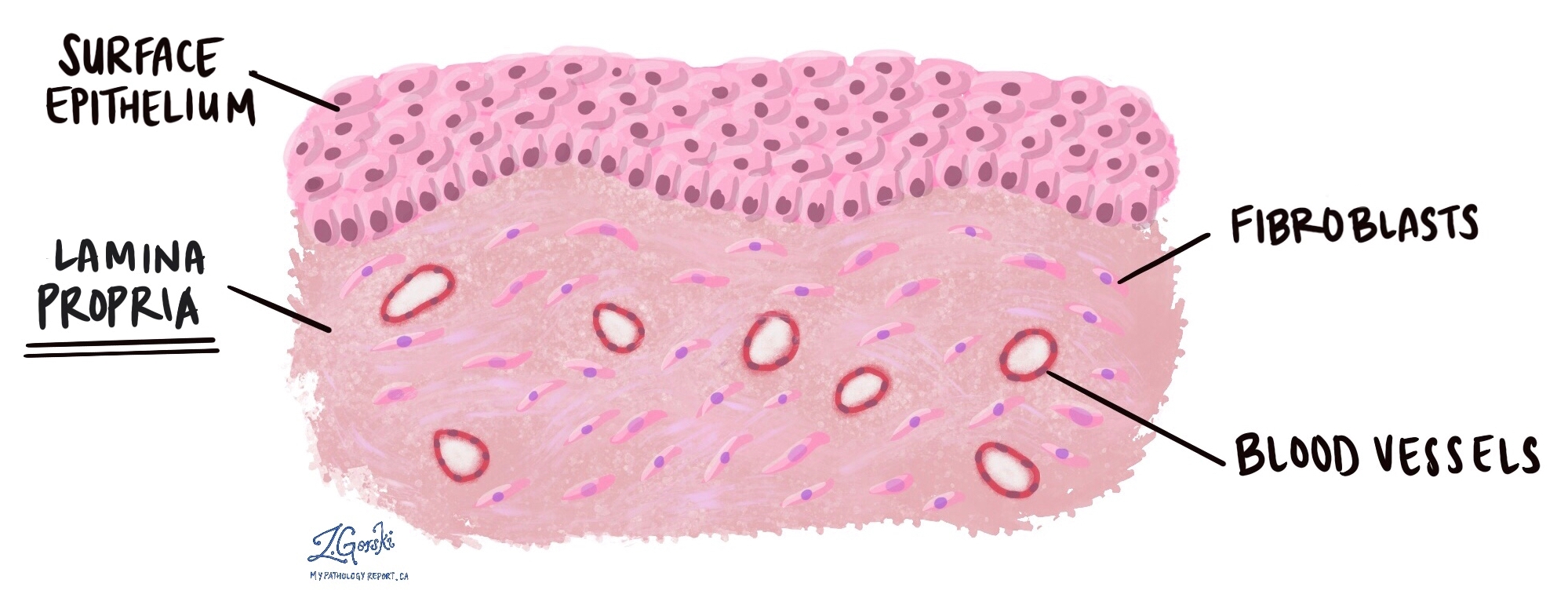by Jason Wasserman MD PhD FRCPC
June 9, 2022
What is lamina propria?
Lamina propria is a thin layer of connective tissue found just under the surface of most types of tissues that are exposed to the external environment. These tissues include the mouth and throat, digestive tract, and cervix. Although the skin is exposed to the external environment, it does not have lamina propria. Instead, the skin has a specialized layer of connective tissue called the dermis.
What does the lamina propria look like under the microscope?
The lamina propria is a very thin layer of tissue that can only be seen under the microscope. It is made up of long, thin supporting cells called fibroblasts, which make specialized matrix proteins that hold the tissue together. The fibroblasts are surrounded by small blood vessels and a variety of inflammatory cells that protect the body from any microbes that may try to enter the body through the surface of the tissue. In most areas of the body, the lamina propria sits directly below and supports specialized epithelial cells which form a barrier on the surface of the tissue called the epithelium.



